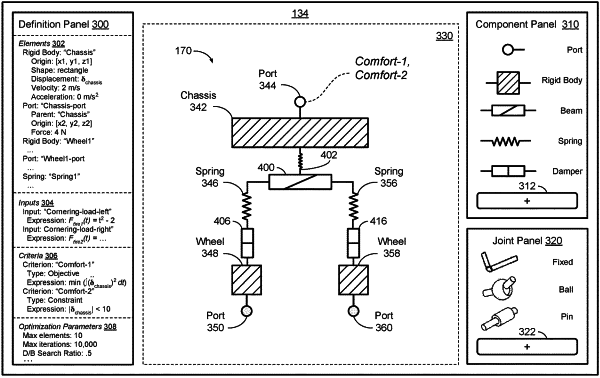| CPC G06F 30/15 (2020.01) [G06F 30/17 (2020.01); G06F 30/3323 (2020.01); G06F 2111/02 (2020.01); G06F 2111/04 (2020.01); G06F 2111/20 (2020.01); G06F 2119/18 (2020.01)] | 21 Claims |

|
1. A computer-implemented method for generating design options for mechanical assemblies, the method comprising:
receiving, via a graphical user interface, one or more optimization parameters associated with an optimization algorithm;
generating, via one more processors included in a computing system, a problem definition based on a partial design for at least a portion of a mechanical assembly and a set of design criteria;
executing the optimization algorithm, via the one or more processors, to generate a first set of design options based on the problem definition and the one or more optimization parameters, wherein each design option included in the first set of design options includes a different mechanical assembly that is derived from the partial design and satisfies the set of design criteria;
as part of a first design iteration, analyzing a level of adherence to the set of design criteria when the one or more design options are subjected to interactive user input in order to identify one or more successful design options included in the one or more design options; and
as part of a second design iteration, generating a second set of design options based on the one or more successful design options identified as part of the first design iteration.
|